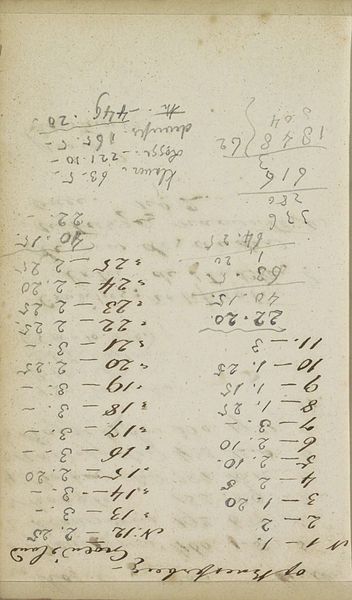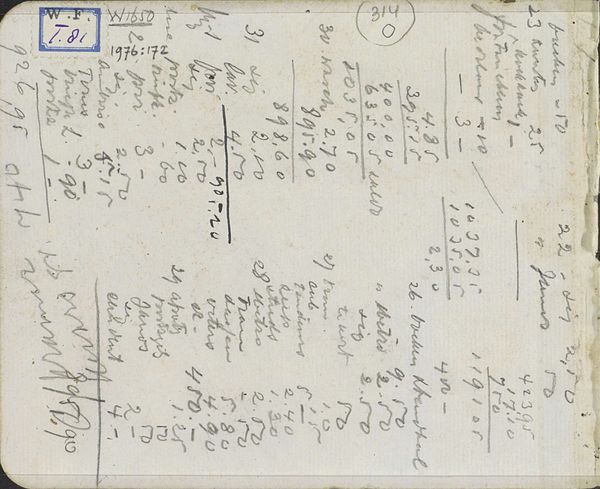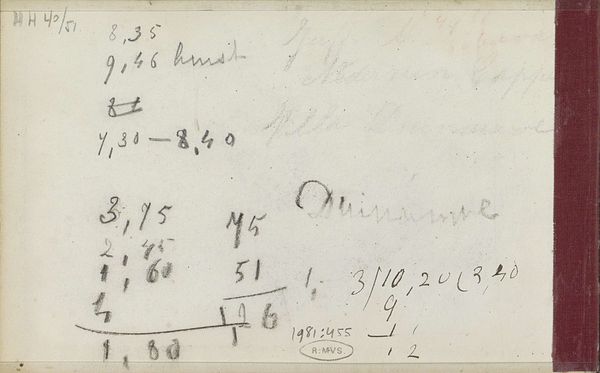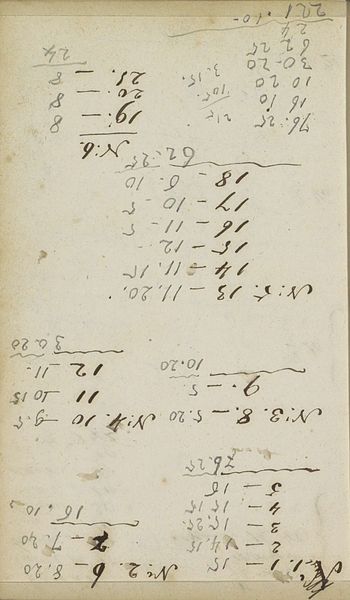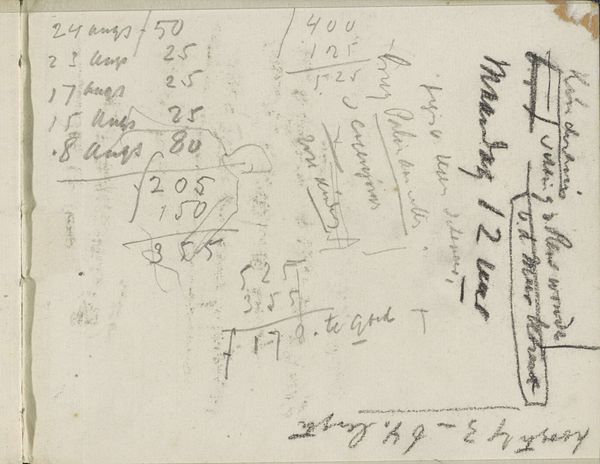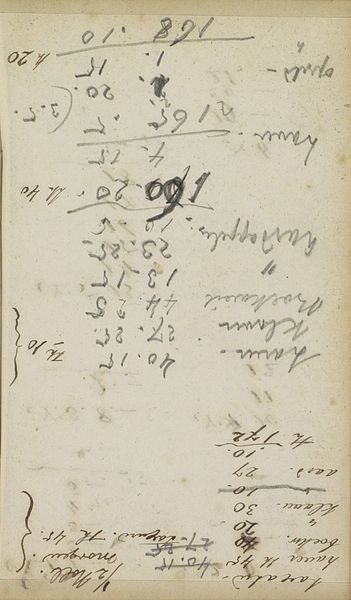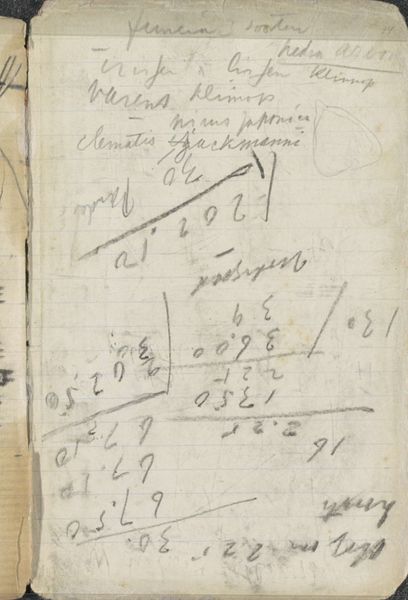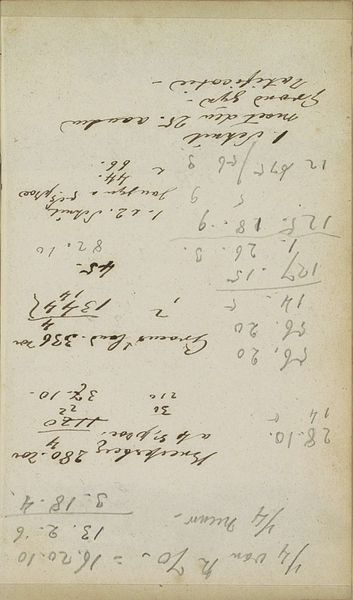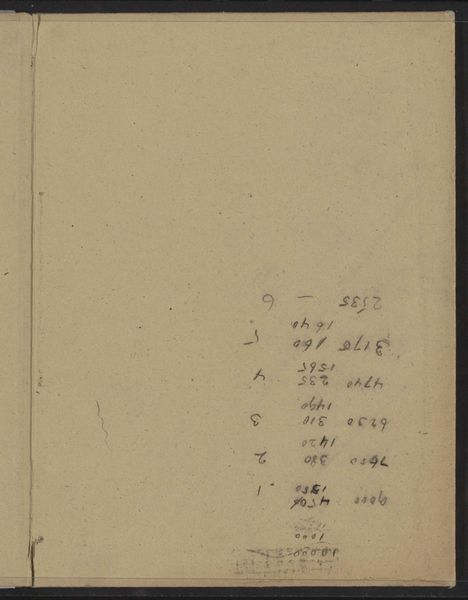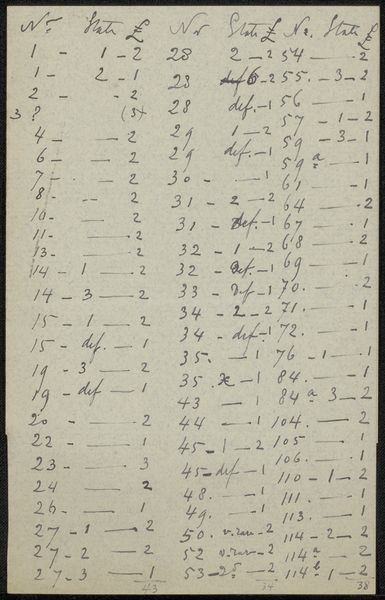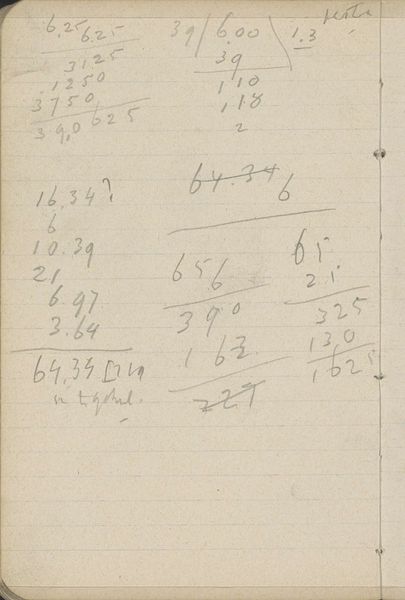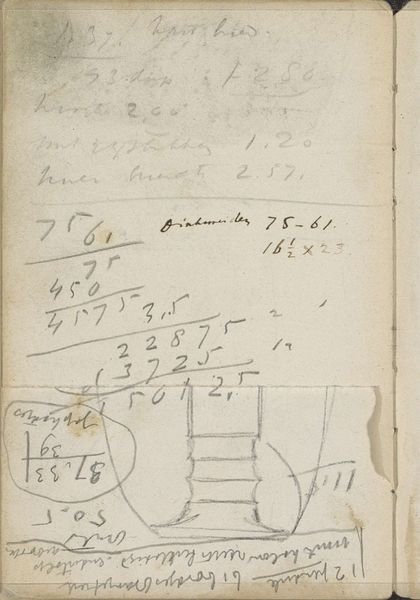
drawing, paper, ink, pen
#
drawing
#
aged paper
#
hand written
#
sketch book
#
hand drawn type
#
paper
#
personal sketchbook
#
ink
#
hand-written
#
ink colored
#
pen work
#
sketchbook drawing
#
pen
#
academic-art
#
sketchbook art
#
modernism
#
calligraphy
Copyright: Rijks Museum: Open Domain
Curator: Today we’re looking at "Annotaties," a drawing by Willem Witsen, made sometime between 1887 and 1920. It's currently held here at the Rijksmuseum. Drawn in ink on paper, it offers a peek into the artist’s personal notes. What strikes you immediately? Editor: It’s like a window into a past mind! There's something so intimate about seeing calculations and handwritten notes all jumbled together. The aged paper gives it a wonderfully melancholic feel, like a found artifact. Curator: It’s intriguing how Witsen utilizes readily available materials - pen, ink, paper - things one might find on any desk at the time. These weren't materials traditionally associated with "high art", which challenged the divide between artistic production and everyday life. He's using simple materials for complex thinking, a real emphasis on the process itself. Editor: Absolutely, the humbleness of materials throws the complexity of thought into even sharper relief. It is really suggestive and intimate, a candid glimpse into the mundane moments that constitute the creative process. You see those looping lines; perhaps those are structural sketches morphing with arithmetic! Curator: Considering the period, which witnessed significant shifts in industrial production, Witsen’s choice to stay with such immediate methods perhaps reflects a resistance or alternative to increasingly mechanised forms of creation. Editor: I love thinking about what each annotation actually meant for him at the time! Some phrases and words in there I think he's even experimenting with lettering itself; seeing handwriting elevate to artistic intent gives this a particularly potent emotional weight. It's almost confessional. Curator: Precisely, by examining this work we start understanding more of how artist functioned within evolving socioeconomic structures—where material limitations actually feed into innovative artistic strategies. Editor: This unassuming sheet really opens outward, doesn't it? Suddenly, the raw calculations bloom into poetic possibility. It's really evocative. Curator: Indeed, it’s like the act of looking reveals something beyond simply the sums or phrases; rather how Witsen existed within—and reacted to—the shifts within artistic boundaries themselves. Thank you. Editor: A tiny echo from yesterday... I love that.
Comments
No comments
Be the first to comment and join the conversation on the ultimate creative platform.
